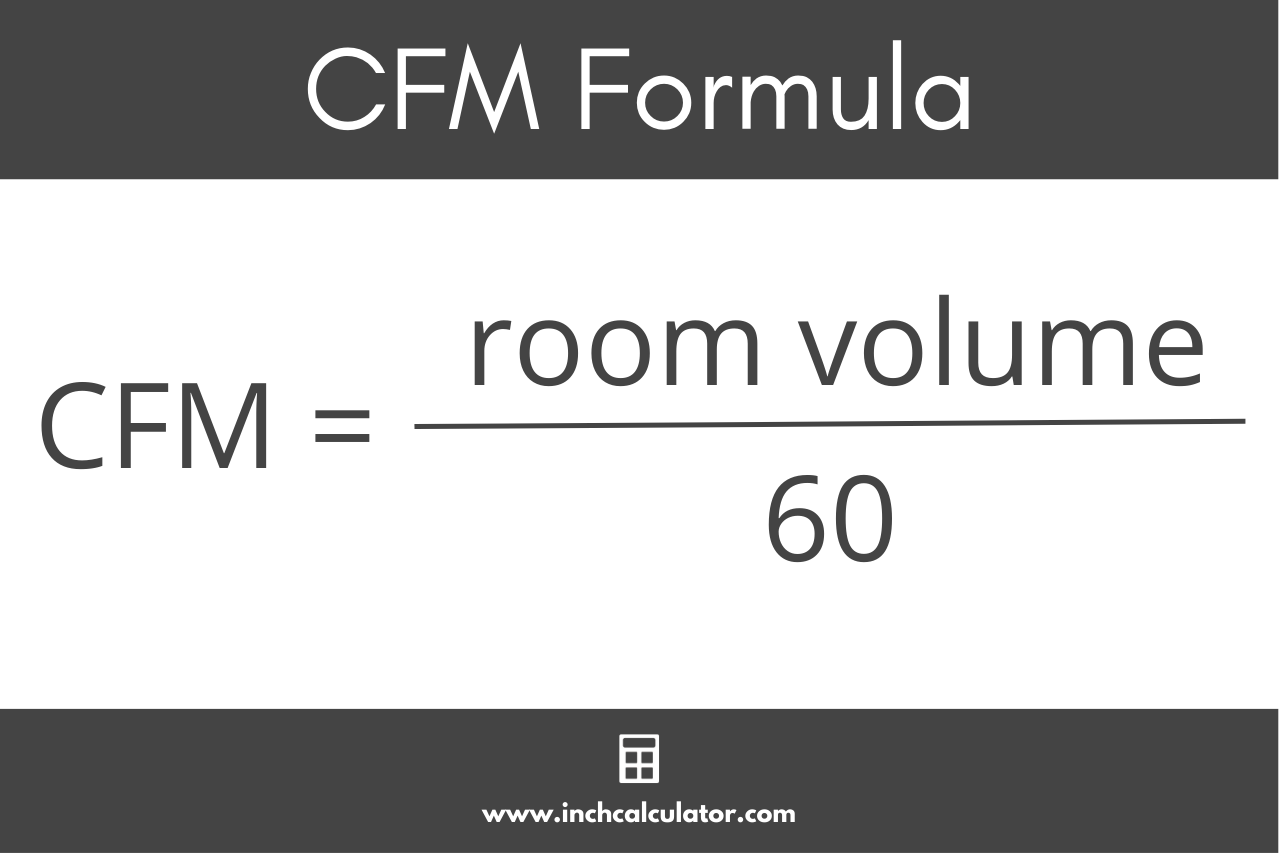CFM Calculator
Calculate how much airflow you need for a room or building using our CFM calculator below.
Results: Required Airflow
On this page:
How to Calculate CFM
Calculating the necessary airflow is a critical step when designing and maintaining an HVAC system or other air-moving application. The minimum airflow is the minimum amount of ventilation required to maintain a comfortable and healthy indoor environment with good air quality.
Airflow is often measured in CFM, or cubic feet per minute. CFM is the volume of air that is moved by or flows through a ventilation system.
You can calculate how much airflow you need in CFM by following a few easy steps.
Step One: Measure the Space
The first step is to measure the volume of space that needs to be ventilated. Larger spaces require more airflow and ventilation than smaller ones.
Start by using a tape measure to measure the length, width, and ceiling height of the space. It will be easiest if all of your measurements are in feet. You can round to the nearest whole foot if you are between full foot measurements.
You can use a length converter to convert your measurements to feet if needed.
Step Two: Calculate the Space’s Volume
The next step is to use the measurements from above to calculate the volume of the space. In order to calculate the amount of airflow in CFM, you’ll need to calculate the volume in cubic feet.
To do this, you can use the volume formula:
volume = length × width × height
Thus, the volume in cubic feet is equal to the length times the width times the height, all in feet.
Step Three: Determine the Air Changes per Hour Needed
An important consideration when figuring the minimum airflow in CFM is how many air changes per hour (ACH) are needed in the space. A kitchen in a restaurant will need many more air changes per hour than a closet in a residence will need.
The air changes needed will multiply how many cubic feet per minute of airflow are required to adequately ventilate the space. Changing the air in a space more frequently improves the air quality.
While the number of ACH can vary, below are some of the recommended numbers for homes based on the room in question:
| Room | Recommended ACH |
|---|---|
| Living room | 3 – 4 |
| Bedroom | 5 – 6 |
| Kitchen | 7 – 8 |
| Bathroom | 7 – 8 |
| Laundry room | 8 – 9 |
| Attic (if cooling) | 12 – 15 |
| Garage (if used for work) | 20 – 30 |
The larger the space, the higher the ACH may need to be in the range provided. Likewise, if the space is enclosed, it needs more ACH than a space that is open, and if the air is very humid or may have particles you want to filter out, a higher ACH is recommended.
If you are trying to filter out allergens, aim for at least 5 ACH in every room.
Step Four: Calculate the CFM Needed
To calculate the CFM needed to ventilate a space with a single air change per hour, you can use the following formula:
CFM = cubic feet ÷ 60
So, the cubic feet per minute of airflow needed to ventilate a space with a single air change per hour is equal to the volume of the space in cubic feet divided by 60.

If you need more than one air change per hour, multiply the room’s area by the number of air changes per hour that you need before dividing by 60. Round up to the nearest whole number.
For example, to calculate the CFM of a 100 sq. ft. bathroom with 8′ high ceilings, your formula would be:
CFM = (100 × 8 × 8) ÷ 60
CFM = (800 × 8) ÷ 60
CFM = 6,400 ÷ 60
CFM = 107
Frequently Asked Questions
What is airflow in HVAC?
Airflow is the amount of air that moves through a heating, cooling, or ventilation system, such as the air that is moved through the ductwork in an HVAC system. Airflow is typically measured in cubic feet per minute, or CFM.
Why is good airflow important?
Good airflow is important to maintain high indoor air quality. A lack of ventilation can result in high humidity levels, which can spur mold growth, and contribute to higher levels of contaminants, which can increase health risks.[1]
The more airflow you have, the more contaminants are filtered out, and the more humidity can be exhausted from the space.
How much airflow is required for a room?
The amount of airflow needed for a room will vary depending on the number of occupants and the use of the space. The American Society of Heating, Refrigerating, and Air-Conditioning Engineers recommends no less than 0.35 air changes per hour of outdoor air for indoor air or 15 CFM per person for homes.[2]
Most health professionals recommend that air changes a minimum of 3 times an hour for most living spaces, with 5 changes per hour being the generally recommended amount.
The following table shows the suggested ventilation requirements in CFM for residential spaces.
A good rule of thumb is that you need a minimum of one CFM per square foot of floor area. The more air changes that are required for that room, the higher the CFM needs, with 3 times being the most commonly recommended amounts.
| Area | Required Ventilation |
|---|---|
| <500 sq ft | 30-60 CFM |
| 500-1,000 sq ft | 45-75 CFM |
| 1,000-1,500 sq ft | 60-90 CFM |
| 1,500-2,000 sq ft | 75-105 CFM |
| 2,000-2,500 sq ft | 90-120 CFM |
| 2,500-3,000 sq ft | 105-135 CFM |
| 3,000-3,500 sq ft | 120-150 CFM |
| 3,500-4,000 sq ft | 135-165 CFM |
| 4,000-4,500 sq ft | 150-180 CFM |
| 4,500-5,000 sq ft | 165-195 CFM |
Similar Plumbing & HVAC Calculators
References
- National Center for Healthy Housing, Ventilation and Indoor Air Quality, https://nchh.org/information-and-evidence/learn-about-healthy-housing/health-hazards-prevention-and-solutions/ventilation-and-indoor-air-quality/
- U.S. Environmental Protection Agency, How much ventilation do I need in my home to improve indoor air quality?, https://www.epa.gov/indoor-air-quality-iaq/how-much-ventilation-do-i-need-my-home-improve-indoor-air-quality



